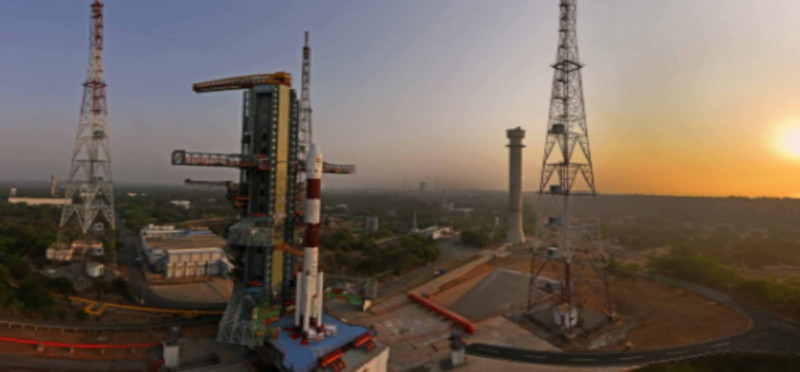
India has successfully launched the PSLV-C45 that carried and placed 29 satellites into the orbit.
The Satellites :-
- The main satellite of PSLV-C45 was EMISAT, an electronic intelligence satellite for the armed forces.
- The satellite is first of its kind for the country.
- EMISAT was placed at an orbit 749 km away from the surface of the earth.
- The satellite will be measuring electromagnetic spectrum measurement.
- The rest 28 satellites are commercial satellites – 25 3U type, two 6U type, and one 2U type nanosatellites — are from Lithuania (two), Spain (1), Switzerland (1) and the United States (24).
Highlights of the Launch :-
- The launch of PSLV-C45 has several firsts.
- For the launch, a new variant of PSLV-QL with four strap-on motors was used.
- It is for the first time, ISRO scientists have placed the satellites in three different orbits by manoeuvring them into their respective orbits.
- After placing the EMISAT into orbit, the fourth stage (PS4) of the launcher was brought down to a height of 504kms and placed the 28 satellites in the orbit. Again, it was brought down to 485kms and there it served as an orbital platform to carry out experiments for several weeks.
- This is the first time, ISRO is providing a micro-gravity environment for research organizations and academic institutions for research.
The PS4 has the following Payloads to Conduct Research –
- Automatic identification system for Maritime satellite applications capturing messages transmitted from ships developed by ISRO.
- The Automatic Packet Repeating System from AMSAT (Radio Amateur Satellite Corporation), India to assist amateur radio operators in tracking and monitoring position data.
- Advanced Retarding Potential Analyzer for Ionospheric Studies (ARIS) for the structural and composition studies of ionosphere developed by Indian Institute of Space Science and Technology (IIST).
Also Read:- Anti-Satellite Missile – A New Weapon In India’s Kitty
PSLV :-
- The Polar Satellite Launch Vehicle is the workhorse of ISRO.
- Barring its two failures during its test phase, the launch vehicle has put in orbit many domestic and international satellite.
- ISRO operates three variants of PSLV – PSLV Core Alone, PSLV Generic and PSLV XL.
- In this mission PSLV-QL, a new variant was used.
- PSLV has the capacity to take payloads weighing 1750kg to the sun-synchronous polar orbit and 1425kgs to Geosynchronous orbit.
- For weights more than this, Geosynchronous Satellite Launch Vehicle (GSLV) is used – up to 2500kg to Geosynchronous orbits and 5000kg to Low Earth Orbits.
Also Read: India’s Carbon Emissions On The Rise – International Energy Agency Report
Reaching New Heights :-
- Earlier with the ASAT test and now with PSLV launch, Indian scientists are reaching new heights in the field of space.
- With forthcoming tests like Gaganyaan and Chandrayaan 2, India will further strengthen its position as one of the best space-faring nation.

Leave a Reply
You must be logged in to post a comment.